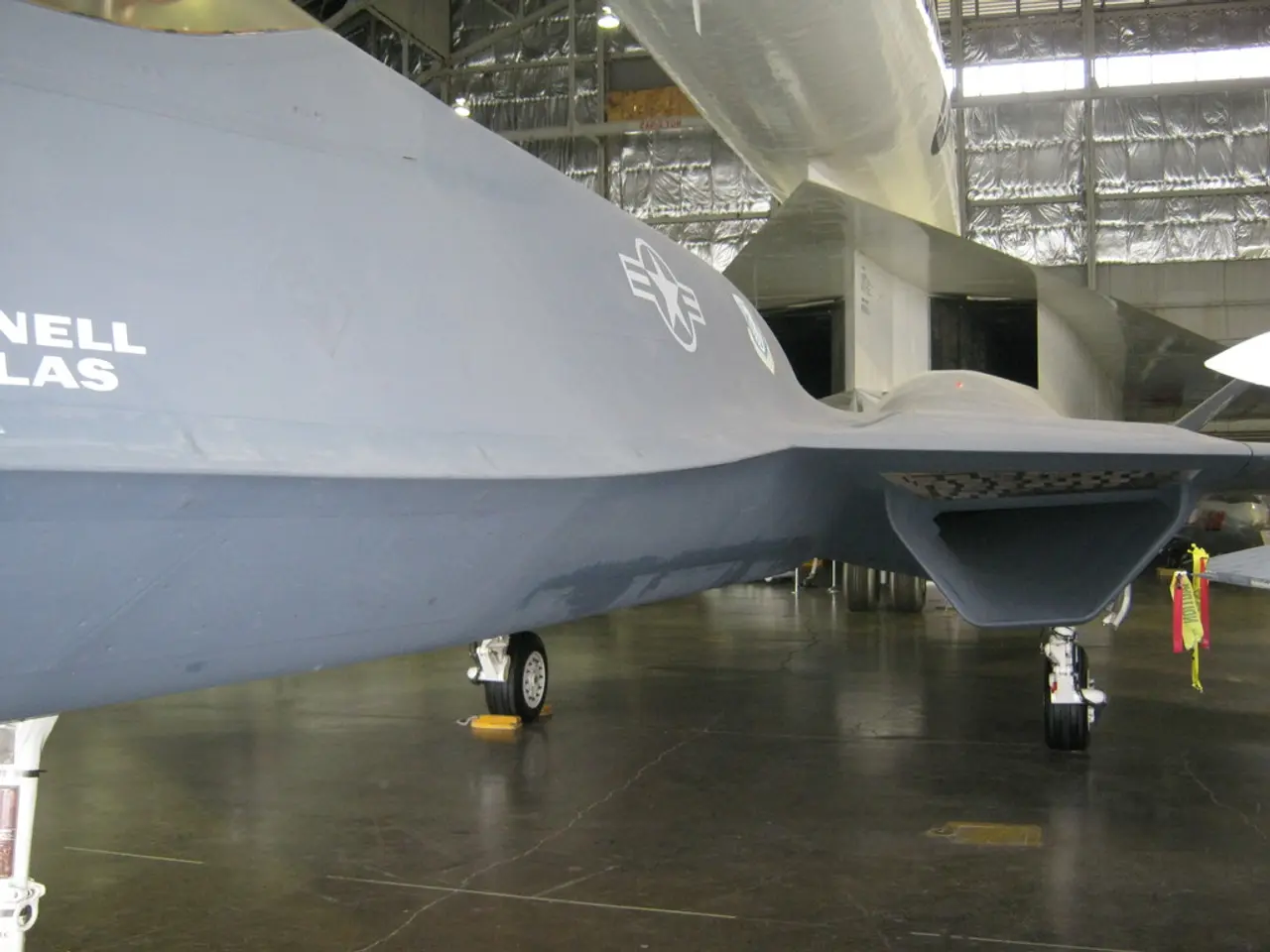"Rolls Royce Ship Posed Under Duisburg Terminals at Port"
The Duisport container hub, specifically the Duisburg Gateway Terminal, is setting a new standard for sustainable energy production in Europe. The terminal's integrated system combines photovoltaic systems, combined heat and power (CHP) plants, and fuel cell systems to achieve a fully carbon-neutral operation.
## Key Components of the Energy System
A significant portion of the terminal's energy comes from a large 10,000 m² solar array, generating approximately 1.3 MW of electricity. This renewable energy source contributes to the overall carbon neutrality of the terminal.
The terminal's CHP plants, powered by Rolls-Royce's mtu Series 4000 units, produce up to 2.5 MW of power each. These units generate both electricity and heat without emissions, their only byproduct being water vapor. The heat produced is also used for various operational needs, maximizing efficiency.
Fuel cell systems, integrated into a smart microgrid, use hydrogen and oxygen to produce electricity and heat, with water vapor as the only emission.
## Role of Gray and Green Hydrogen
While the specific type of hydrogen used in the Duisport project is not explicitly stated, gray hydrogen, produced from fossil fuels, is a common method for hydrogen production. Green hydrogen, produced from renewable energy sources such as solar or wind energy, is considered the most environmentally friendly option. The integration of photovoltaic systems suggests a potential for renewable energy to be used in hydrogen production.
## Collaboration and Innovation
The harbor is collaborating with the Fraunhofer Institute "Umsicht" in making pioneering contributions to the intelligent interconnection of various energy sources. The harbor's energy systems demonstrate a significant reduction in carbon emissions compared to traditional energy sources.
Containers with antennas and chimneys in the terminal area house combined heat and power plants. Each combined heat and power plant is driven by a twelve-cylinder gas engine from Rolls Royce. The office building adjacent to the container hub is also powered by photovoltaic systems, combined heat and power plants, and fuel cell systems.
The EnerPort II project, under which this energy system is developed, aims to establish Duisburg as a leader in climate protection. The project's focus on hydrogen and renewable energies sets a precedent for sustainable infrastructure in logistics and transportation, with potential benefits extending beyond the port to local communities through cleaner air and stronger energy networks.
The container hub in the European hinterland is equipped with solar collectors at its entrance. Rolls Royce Power Systems, the manufacturer of the engines, is based in Friedrichshafen. The harbor's innovative approach to energy production is a shining example of sustainable practices in the logistics industry.
In the realm of technology, smart microgrids at the Duisport container hub integrate fuel cell systems, utilizing hydrogen and oxygen to produce electricity and heat, potentially paving the way for green hydrogen production.
The sports industry could learn from Duisport's energy strategy, as the terminal's use of renewable sources such as solar energy and hydrogen demonstrates innovative finance models for sustainability within the industry.




